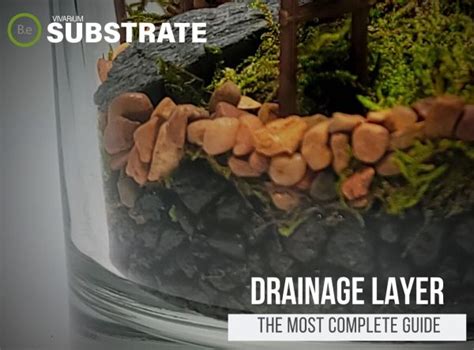Introduction
Bioactive terrariums are self-sustaining ecosystems that simulate natural environments, providing a sanctuary for various animals and plants. The key to these thriving microcosms lies in the unseen – beneficial bacteria. These microscopic helpers play a crucial role in maintaining a balanced and healthy terrarium.

The Benefits of Bioactive Terrarium Beneficial Bacteria
The presence of beneficial bacteria in bioactive terrariums offers numerous advantages:
- Nutrient cycling: Microbes break down organic matter into nutrients that plants can utilize.
- Waste decomposition: Bacteria convert animal waste and debris into harmless compounds, preventing foul odors and maintaining a fresh environment.
- Disease suppression: Beneficial bacteria compete with harmful pathogens for resources, reducing the risk of disease outbreaks.
- Improved plant growth: Bacteria release hormones and compounds that promote plant growth and vitality.
- Increased biodiversity: Bioactive terrariums often harbor a diverse array of beneficial bacteria, creating a complex and resilient ecosystem.
Common Bioactive Terrarium Beneficial Bacteria
Various types of bacteria thrive in bioactive terrariums, each contributing to the overall health of the system. Some common species include:
- Nitrifying bacteria (Nitrosomonas, Nitrobacter): Convert ammonia (toxic to animals) into less harmful nitrates.
- Denitrifying bacteria (Pseudomonas, Alcaligenes): Convert nitrates into nitrogen gas, removing it from the system.
- Cellulolytic bacteria (Cellulomonas, Bacillus): Degrade cellulose in plant matter, making it available for mineralization.
- Proteolytic bacteria (Bacillus, Pseudomonas): Break down proteins in animal waste and carcasses.
- Lactic acid bacteria (Lactobacillus, Pediococcus): Produce lactic acid, which sanitizes the environment and inhibits harmful bacteria.
Establishing and Maintaining Beneficial Bacteria
Creating a thriving population of beneficial bacteria in a bioactive terrarium involves:
- Using untreated, natural soil: Untreated soil contains a rich diversity of microorganisms essential for a healthy ecosystem.
- Adding biodegraders (springtails, isopods): These small invertebrates assist in breaking down organic matter, providing a food source for bacteria.
- Providing adequate ventilation: Good airflow prevents anaerobic conditions that hinder bacterial growth.
- Avoiding excessive cleaning: While some cleaning is necessary, overcleaning can disrupt the delicate balance of bacteria.
- Monitoring conditions: Regularly check temperature, humidity, and pH levels to ensure they are optimal for beneficial bacteria.
Common Mistakes to Avoid
When establishing and maintaining beneficial bacteria in bioactive terrariums, certain pitfalls can be avoided:
- Overfeeding animals: Excess food can lead to increased waste production, overwhelming the bacteria’s ability to decompose it.
- Using harsh chemicals: Chemicals, such as disinfectants, can kill beneficial bacteria and disrupt the ecosystem.
- Introducing non-bioactive animals: Non-bioactive animals, such as reptiles, produce waste that is not suitable for bacterial decomposition.
- Overstocking the terrarium: Too many animals can result in excessive waste production and strain the bacterial population.
- Ignoring environmental factors: Temperature, humidity, and pH can significantly impact bacterial growth and activity.
Tips and Tricks for Success
Enhancing the population and activity of beneficial bacteria in bioactive terrariums can be achieved through the following tips:
- Gradually introduce animals and plants: Allow bacteria to establish themselves before adding larger numbers of inhabitants.
- Maintain a humid environment: Most beneficial bacteria thrive in humid conditions.
- Add live plants: Plants absorb nutrients and create oxygen, benefiting bacteria.
- Rotate biodegraders: Isopods and springtails have different preferences and decomposition rates. Rotating them can ensure a balanced breakdown.
- Consider inoculating with beneficial bacteria: Commercial products containing specific strains of bacteria can accelerate the establishment of a stable population.
Pros and Cons
Like any approach, bioactive terrariums utilizing beneficial bacteria have their advantages and disadvantages:
Pros:
– Self-sustaining ecosystem
– Reduced maintenance and cleaning
– Improved animal and plant health
– Educational value
Cons:
– Initial setup can be time-consuming and costly
– Requires a deeper understanding of terrarium ecology
– Not suitable for all animal species
Conclusion
Bioactive terrariums harness the power of beneficial bacteria to create thriving microcosms that mimic natural ecosystems. By fostering a healthy population of these microscopic helpers, hobbyists can enjoy a balanced, low-maintenance enclosure that provides optimal conditions for their inhabitants. With proper care and maintenance, bioactive terrariums can become a testament to the fascinating interplay between nature and science in 2025 and beyond.
Reviews
- “Bioactive terrariums have revolutionized my reptile care. The reduction in cleaning and the improved health of my animals have been incredible.” – David, Herpetologist
- “As a biology student, I was amazed by the educational value of my bioactive terrarium. It’s a living lesson in ecological processes.” – Sarah, Student
- “Initially, I was hesitant about the cost and effort, but the benefits have far outweighed them. My terrarium is a work of art and a source of constant wonder.” – Mark, Hobbyist
- “I would recommend bioactive terrariums to anyone who wants to provide the best possible environment for their animals.” – Emily, Veterinarian





















